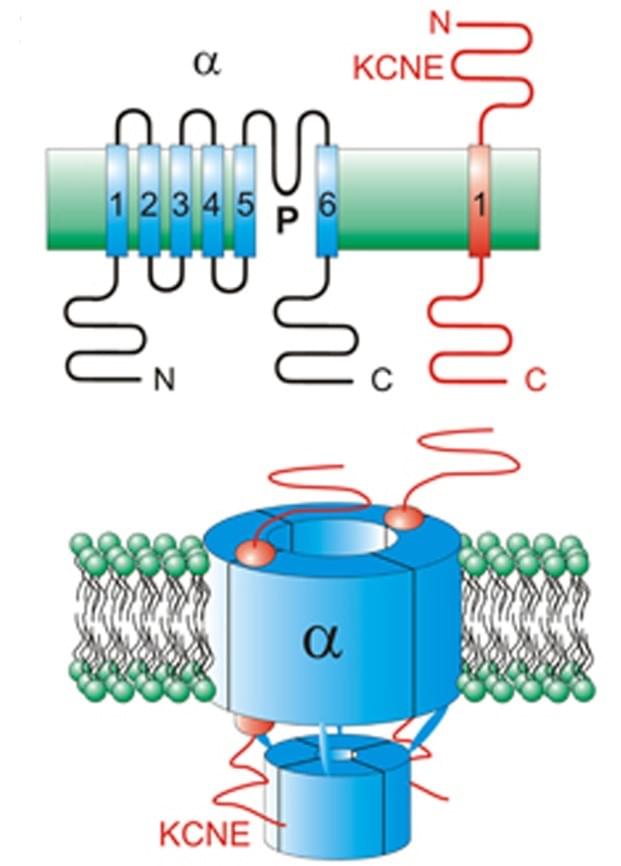Custom MemPro™ The Slow Voltage-gated Potassium Channel Accessory Protein (MinK) Family
Creative Biostructure has developed custom MemPro™ gene-to-structure services for the MinK Family. Mink family, also known as KCNE family, consists of potassium-selective channel accessory proteins with single transmembrane domains. The protein family includes 5 members: MinK, MiRP (MinK-related peptides) 1, MiRP2, MiRP3 and MiRP4, encoded by KCNE 1-5 respectively. These proteins are small type I integral membrane proteins, which can associate with and regulate various voltage-gated potassium channels.
 Figure. Kv α and KCNE subunits.
Figure. Kv α and KCNE subunits.
Potassium channels are the most diverse and widely distributed group of ion channel. Potassium channels regulate muscular contraction, signaling in nervous tissue and fluid homeostasis. The Mink family belongs to potassium channel subunits regulate voltage-gated potassium (VGK) and they are membrane glycoproteins possessing a single transmembrane (TM) domain. Voltage-gated potassium channels mediate the diffusion of potassium ions through plasma membrane to control cell secretion, excitability and signal transduction. They have four α-subunits which interact with additional subunits including β-family members, Mink proteins. Mink, MiRP1 and MiRP2 are the most well studied members. They can affect the surface expression, pharmacology and regulation of VGK channels. They can also influence channel gating, ion selectivity and ion flux rate to regulate the function of VGK channels. Consequently, mutations in KCNE1, KCNE2 and KCNE3 result in some inherited and acquired diseases. Mink proteins encoded by KCNE family contain 103-177 amino acid residues. Mink encoded by KCNE1 is a short integral membrane peptide and it has been shown to function in the heart and ear. Mink can be assembled with different factors to modulate the gating characteristics and different potassium channel. It can assemble with KCNQ1 (Kv1.9) to form IKs channels. MiRPs (Mink-related peptides) confer changes in the pharmacology, conductance and gating kinetics of VGK channel. The proteins MiRP1-MiRP4 are encoded by the gene of KCNE2-KNCE5 respectively. They are all small integral membrane subunits. MiRP1 can assemble with HERG (also known as Kv11.1, KCNH2, potassium voltage-gated channel subfamily H member 2) to form Ikr channels and alter its function. MiRP2 assembled with Kv3.4, MiRP3 with Kv4.2 and MiRP4 with Kv5.1.
Creative Biostructure can provide custom MemPro™ gene-to-structure services for membrane proteins. Please click for more information.
Shawn M. Crump and Geoffrey W. Abbott. Arrhythmogenic KCNE gene variants: current knowledge and future challenges. Front Genet. 2014 Jan 24;5:3.
Abbott GW and Goldstein SA. Potassium channel subunits encoded by the KCNE gene family: Physiology and pathophysiology of the MinK-related peptides (MiRPs). Mol Interv. 2001 Jun;1(2):95-107.
